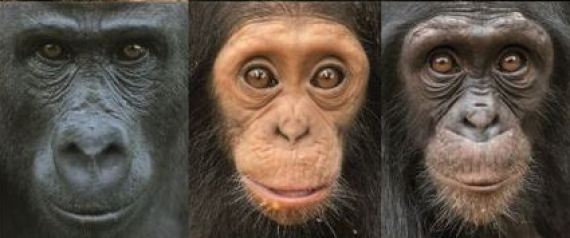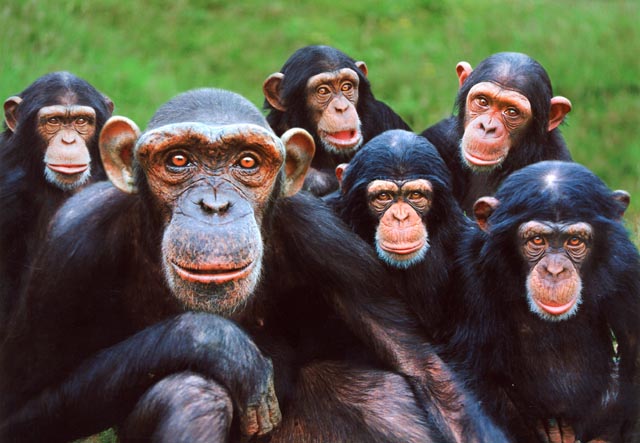| Animals World |
|
|
Primates
The primates are an order of mammals that includes
monkeys, apes, lemurs, tarsiers, and
humans. The other primates are thus the nearest
relatives to human beings. Anatomically, primates
have many similarities to the earliest placental
mammals. Primitive features retained by
primates, but lost in many other mammals, include
five-fingered hands and feet with individually
mobile fingers and toes, a collarbone (clavicle),
a relatively simple cusp pattern in the molar
teeth, and the freedom of movement within the
forearm that allows the wrist to rotate without
moving the elbow.
Many primates live in trees; those that do not,
have anatomical features showing that their ancestors
were tree-dwellers. These include features
directly concerned with arboreal locomotion,
those concerned with vision and intelligence, and
those concerned with reproduction. Arboreal locomotion,
the ability to climb trees, has many direct
consequences in primate anatomy. Most primates,
for example, possess long, agile arms and
legs. Grasping hands and feet give them the ability
to hold objects and to climb by wrapping the
fingers around branches. This is different fromthe
many other arboreal animals that dig their claws
into the bark. The primate grasp is aided by the
development of opposable thumbs and big toes. If
a primate grasps an object, the fingerprint surface
of the thumb faces the corresponding surfaces of
the other fingers. This is possible because the bone
supporting the thumb can rotate out of the plane
of the other fingers. Most primate thumbs and big
toes are opposable; human feet are unusual. Individual mobility of all fingers and toes is a primitive
mammalian ability that primates have kept
but which many other mammals have lost through
evolution. Combined with the grasping ability of
hands and feet, this characteristic allows primates
to manipulate objects of all sizes rather skillfully.
Primates also have hairless friction-skin on
their palms and soles, which are supplied with a
series of parallel ridges in complex patterns (fingerprints).
These ridges provide a high-friction
surface, which helps in grasping objects-or in
holding branches without slipping. Claws, which
could get in the way and cause injury, have generally
been reduced to fingernails that rub against
things and thus stay short. The clavicle (collarbone),
which strengthens the shoulder region, is
present in primitive mammals. Many modern
mammals have lost this bone, but in primates, it
has been retained and often strengthened.
|
Look also: Most Popular AnimalsPrincipal Terms
arboreal: tree-dwelling, or pertaining to
life in the trees |
|
Copyright 2016 |
|



